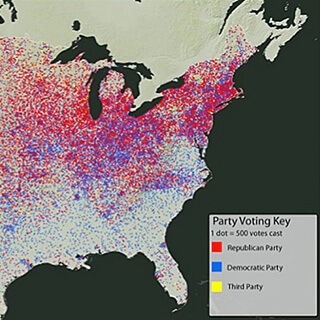Overview
Robert K. Nelson reviews Apples and Ashes: Literature, Nationalism, and the Confederate States of America (Athens: University of Georgia Press, 2012) by Coleman Hutchison.
Review
 |
Coleman Hutchison's Apples and Ashes: Literature, Nationalism, and the Confederate States of America is the first literary history to focus exclusively upon Confederate literature. Dating back to Edmund Wilson's Patriotic Gore (1962), studies of the literature of the Civil War have paid far more attention to the North. Hutchison seeks to rescue the Confederacy's literature—its poems, songs, literary criticism, memoirs, and its few novels—from this critical neglect. For him, the short life of the Confederate nation-state—surviving only a few brief years—and its relatively modestly-sized literature does not make that literature unimportant. Quite the contrary. The paucity and transience of Confederate literature, he contends, is its great virtue as an object of study, for it "allows us to trace the development of a national literature both in process and in miniature" (3). Hutchison suggests that regardless of its supposed aesthetic shortcomings (and he wisely opts to avoid such judgments himself), the study of Confederate literature illuminates "the still-shadowy relationship between literature and nationalism" by enabling scholars to explore a concentrated, intense effort of novelists, poets, and critics to write a nation into existence (14).
Apples and Ashes is filled with often brilliant and always engaging close readings of antebellum southern nationalist literary criticism and Confederate novels, poems, songs, and memoirs. Addressing different moments in time and different genres, Hutchison's chapters are tied together by a persistent focus on Confederate literary nationalism's relationship to imagined places and actual spaces that were inside, outside, and overlapping the South. Hutchison finds first southern and then Confederate literary nationalists from the 1830s into the 1870s mediating between and meditating on the nation's relationship to the local, sectional, international, and transnational.
In a first chapter on literary criticism in the Southern Literary Messenger from the 1830s into the 1850s, Hutchison convincingly disrupts arguments that ignore the complexities of antebellum southern literary nationalism by seeking antecedents for Confederate literary nationalism in the decades before the war. He instead emphasizes the "contingency and provisionality" of antebellum southern literary nationalism, arguing that southern literary critics—sometimes the same critic at different moments or even in the course of a single article—variously positioned the literature of the South as a contribution to American literature or, alternately, as an expression of the regional or national distinctiveness of the South (61). He contends that the aims of antebellum southern nationalists were far from consistent and in no simple or teleological way spawned the literary nationalism of the Confederacy.
 |
| W. A. Reed, Augusta Jane Evans Wilson, circa 1890. Courtesy of Alabama Department of Archives and History. |
Hutchison's second chapter explores the cosmopolitan, international ambitions of Confederate writers, particularly Augusta Jane Evans in her wartime novel Macaria. However much they wanted to demonstrate the distinctiveness of southern culture and literature, Evans and other Confederate authors aimed to create something greater than merely a provincial literature. Themselves engaged with English and European literature, they hoped to write for international audiences and contribute to a transnational republic of letters. They aspired to produce great literature that would be recognized as such in the transatlantic marketplace, enabling the Confederacy to claim not just national distinctiveness but national distinction. (Inasmuch as they both analyze the transnational nature of Confederate nationalism, Paul Quigley's recent historical study, Shifting Grounds: Nationalism and the American South, 1848-1865, and Apples and Ashes complement each other very well.)
Evans resisted localism and provincialism in Macaria by refusing to ground the novel in a particular locale. Instead, the events of the novel centered around an unnamed southern community, a place that arguably represented what was universal in all southern communities. In this, Hutchison argues, Evans effectively nurtured Confederate national identity by obscuring, even denying, the particularities of the local. Not so the occasional poetry appearing in Confederate newspapers, the subject of Hutchison's third chapter. This hastily written poetry, he argues, often engaged with the politics of the moment. It also engaged with the politics of place, addressing local and state communities, occasionally to the point of being incomprehensible to those who lacked familiarity with the politics and people of those communities. While Hutchison acknowledges how localism and nationalism could abet one another, the pronounced localism of much of this poetry, he emphasizes, could and ultimately did "threaten the coherence of national community" (138).
Hutchison's fourth chapter traces the various nationalistic appropriations of "Dixie" as both Confederates and northerners sought to claim the popular song and invest it with different nationalistic and local meanings. Originally written as a minstrel song expressing an ambivalent longing for the slave South, white Confederates appropriated and revised it as a song celebrating their affective attachment to their new nation. At the same time, unionist versions of the song appeared that used the catchy melody to condemn rebellion and foretell the punishment that would be visited on Confederate traitors. Hutchison's fascinating analysis of "Dixie" reveals the song to have been a contentious transnational commodity, a "fungible cultural form onto which various constituencies [South and North] were cued to project their nationalist fantasies" (171).
 |  |
| Loreta Janeta Velazquez in Female Attire and Velazquez as Harry T. Buford, First Lieutenant Independent Scouts C.S.A. Illustrations from The Woman in Battle (1876). Courtesy of Documenting the American South, University of North Carolina at Chapel Hill. | |
Apple and Ashes's final chapter on Loreta Janeta Velazquez's postwar memoir The Woman in Battle (1876) recounts the Cuban-born Velazquez's movements through the Confederacy, Europe, South America, and the American West during the Civil War era and her various transnational adventures involving international finance, blockade running, and a daring aborted raid out of Canada. Hutchison argues that while Velazquez's narrative is unusual in recounting the tale of a woman who masqueraded as a man in order to fight in the war, it typified the decidedly transnational nature of the American Civil War and of Confederate literary nationalism.
Hutchison's readings are consistently smart, provocative, and engaging. Apples and Ashes convincingly demonstrates the fundamentally transnational nature of Confederate literary nationalism and, arguably, nationalism more generally. It shows that as we increasingly attend to transnational currents in culture and thought, nationalism and the concept of the nation remain vital and rewarding objects of study. If there is a weakness to Apples and Ashes, it is that Hutchison articulates no central, clear, explicit argument about Confederate literary nationalism or the relationship between literature and nationalism. In his introduction Hutchison instead offers a number of "themes"—all significant and important—that emerge from Apples and Ashes, including the transnational nature of Confederate literature, the cosmopolitan aspirations of Confederate writers, and the contingency and provisional nature of first southern and then Confederate literary nationalism (3). Unlike recent historical studies by Michael T. Bernath and Alice Fahs that both argue that Confederate literary and cultural nationalists failed to develop a literature or culture that was truly distinct from the North's, Hutchison declines to offer a final assessment of Confederate literary nationalists' successes or failures or Confederate literary nationalism's strengths or weaknesses. (Apples and Ashes does not have a conclusion or epilogue.) That may be Apples and Ashes's contribution as much as it is its limitation: refusing to simplify either southern or Confederate literary nationalism into a unified, consistent movement or program, Hutchison thoughtfully traces its many nuances, ambivalences, instabilities, and contingencies. He untangles some of the numerous ways Confederate writers meditated on the distinct and not-so-distinct nature of their slaveholding nation and articulated their great expectations about what that nation and its literature would contribute to the world. No one can dismiss Confederate literature as uninteresting or unimportant after Apples and Ashes.
Recommended Resources
Print Material
Bernath, Michael T. Confederate Minds: The Struggle for Intellectual Independence in the Civil War South. Chapel Hill: University of North Carolina Press, 2010.
Bonner, Robert E. Mastering America: Southern Slaveholders and the Crisis of American Nationhood. New York: Cambridge University Press, 2009.
Fahs, Alice. The Imagined Civil War: Popular Literature of the North and South, 1861-1865. Chapel Hill: University of North Carolina Press, 2001.
Faust, Drew Gilpin. The Creation of Confederate Nationalism: Ideology and Identity in the Civil War South. Baton Rouge: Louisiana State University Press, 1988.
McPherson, James M. Is Blood Thicker than Water?: Crises of Nationalism in the Modern World. Toronto: Vintage Canada, 1998.
Quigley, Paul. Shifting Grounds: Nationalism and the American South, 1848-1865. New York: Oxford University Press, 2012.
Rubin, Anne Sarah. A Shattered Nation: The Rise and Fall of the Confederacy, 1861-1868. Chapel Hill: University of North Carolina Press, 2005.
Links
Evans, Augusta Jane. Macaria; or, Altars of Sacrifice. Richmond, VA: West and Johnson, 1864. Documenting the American South. 2001. University Library, The University of North Carolina at Chapel Hill. http://docsouth.unc.edu/imls/macaria/macaria.html.
Velazquez, Loreta Janeta. The Woman in Battle: A Narrative of the Exploits, Adventures, and Travels of Madame Loreta Janeta Velazquez, Otherwise Known as Lieutenant Harry T. Buford, Confederate States Army. Richmond, VA: Dustin, Gilman and Company, 1876. Documenting the American South. 1999. University Library, The University of North Carolina at Chapel Hill. http://docsouth.unc.edu/fpn/velazquez/velazquez.html.

